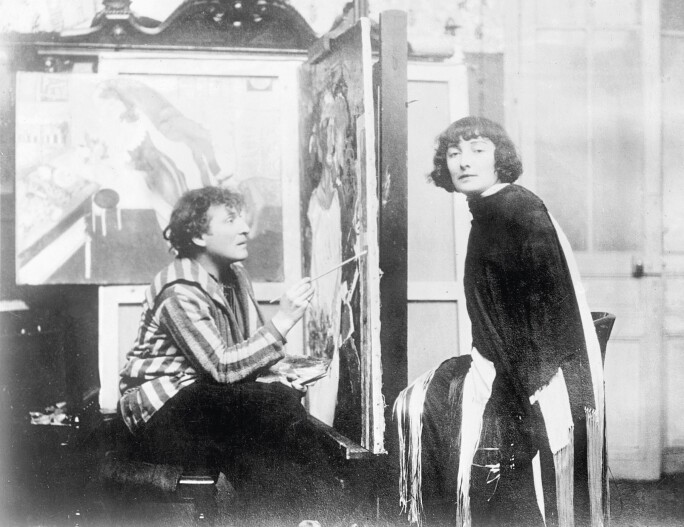Fille au corsage rouge et bouquet was completed towards the end of Chagall’s second period in France, a few years before he was forced to flee to the United States, and is a striking embodiment of the style that marked his work from the 1930s. The work of this period in France is permeated by the love and happiness that Chagall experienced with his first wife Bella Rosenfeld and their daughter Ida, but the country itself was also to have a significant impact on his art. Franz Meyer notes a change in the mood of Chagall’s paintings from this period, "This artistic experience was bound up with that of the Southern nature, the landscape, light, and air of Provence and Italy… Chagall’s pictures once again overflow with material sensuousness…" (Franz Meyer, Franz Meyer, Marc Chagall, Life and Work, New York, 1963, p. 421). This lushness can be seen in the vivid red color of the woman’s dress and the larger-than-life bouquet behind her, all rendered with visceral impasto.

The work was previously in the collection of Alain Lesieutre, a Parisian who pioneered the collecting of Art Nouveau and Art Deco works, which were previously only appreciated by a small number of aesthetes. He was one of the influential visionary figures who documented the history of these collecting categories in the 1970s, contributing to the rediscovery of many artists.